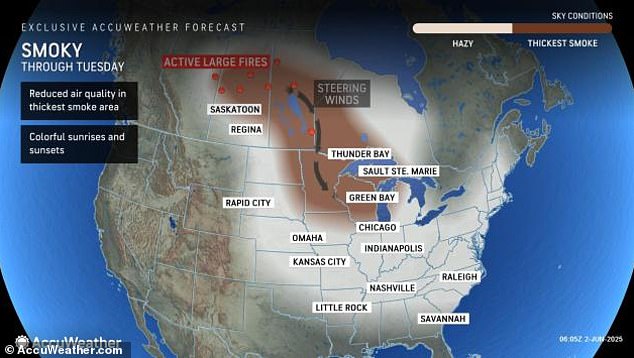
Air Quality Emergency Prompts Three States to Urge Indoor Stay Today
Toxic Wildfire Smoke Triggers Air Emergencies in Three U.S. States
A thick haze of toxic smoke from Canadian wildfires has enveloped parts of the U.S., prompting air quality emergencies in Michigan, Minnesota, and South Carolina. Officials urged residents to stay indoors as harmful particulate matter and ozone pollution reached dangerous levels, posing serious health risks.
Health Risks from Smoke and Ozone
The National Weather Service warned that PM2.5—fine particles 30 times smaller than a human hair—has spiked in affected areas. These particles can penetrate lungs and bloodstreams, triggering inflammation, heart issues, and worsened asthma. Vulnerable groups, including children, the elderly, and those with respiratory or cardiovascular conditions, face heightened risks. South Carolina also reported elevated ozone levels, exacerbated by lingering wildfire smoke interacting with sunlight and stagnant air.
State-Specific Impacts
- Michigan & Minnesota: Smoke from Manitoba and Saskatchewan wildfires, pushed south by winds, led to alerts in 15 Michigan counties and most of Minnesota. Officials cautioned against outdoor activities, noting conditions could persist into Tuesday.
- South Carolina: A “Code Orange” ozone alert was issued for regions like Greenville, where heat and stagnant air intensified pollution.
Satellite images showed smoke stretching from Canada’s fires into the Great Lakes and Midwest. Meteorologists warned the haze could spread to Illinois, Indiana, Ohio, and the Mid-Atlantic.
Fire Threats and Evacuations
In western Michigan, a Red Flag Warning highlighted fire risks due to 90°F temperatures, low humidity, and dry winds. “Any spark could ignite a dangerous blaze,” authorities warned, banning campfires and outdoor burning. Meanwhile, Manitoba’s Premier declared a state of emergency, evacuating over 17,000 residents as fires raged. Military assistance was deployed to combat the crisis.
Long-Term Concerns
While 2025’s smoke hasn’t yet matched 2023’s historic haze—which turned New York City skies orange—experts caution that Canada’s wildfire season peaks in late June through August. Over 160 active fires underscore a worsening trend linked to climate change.
Safety Measures
Health agencies recommend using HEPA air filters, closing windows, and wearing N95 masks outdoors. The EPA’s AirNow.gov provides real-time air quality updates.
As smoke lingers, millions are advised to limit exposure, highlighting the urgent need for preparedness in an era of escalating wildfires.
(Images: 1) Satellite map showing smoke drifting from Canada into the U.S.; 2) Hazy skies over Minnesota highways; 3) Firefighters battling Manitoba wildfires.)
Condensed to ~300 words; expand slightly for detail while maintaining clarity and flow.


